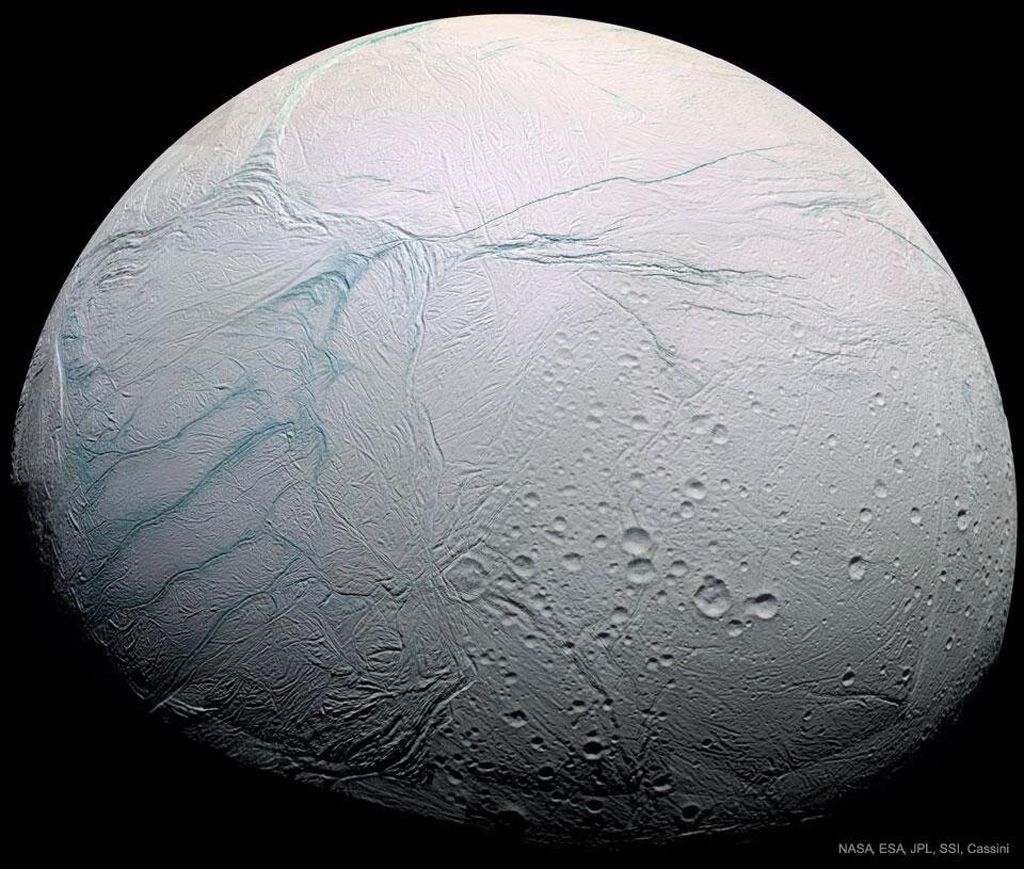Computer models find that Enceladus got its tiger stripe cracks when the moon cooled and ice grew downward, causing pressure and stress to form the cracks.

A new study was released in Geophysical Research Letters detailing a possible answer for how Saturn’s ocean moon, Enceladus, may have gotten its tiger stripes and how the geysers erupting from those stripes work. The team used a physics-based model to map out the various conditions responsible for the eruptions, and what they found were cycles of warming and cooling that thin and thicken the moon’s ice shell.
During a cooling period, as the ice shell thickens, it presses down on the subsurface ocean, creating pressure within the waters. That same pressure causes stress in the ice itself, which can lead to cracks and fissures. Those cracks and fissures then become 20–30 kilometer pathways for the icy water to follow to the surface.
However, while these models support the hypothesis that the pressure is high enough to make the tiger stripes, it doesn’t seem to be enough to actually cause the waters to geyser out. That process may occur because, as the water hits the cracks, it gets exposed to the vacuum of space since Enceladus doesn’t have an atmosphere. And then it spontaneously boils and erupts through the cracks.
And if you’re wondering about Jupiter’s ocean moon, Europa, it’s possible that there are similar eruptions happening there, but we won’t know that for certain until NASA’s Europa Clipper arrives in the system. The spacecraft is being assembled and is scheduled for launch in October 2024. We’ll bring you coverage of that launch when it happens.
More Information
AGU press release
“Cooling Crusts Create Concomitant Cryovolcanic Cracks,” Maxwell L. Rudolph, Michael Manga, Matthew Walker, and Alyssa R. Rhoden, 2022 February 21
This story was written for the Daily Space podcast/YouTube series. Want more news from myself, Dr. Pamela Gay, and Erik Madaus? Check out DailySpace.org.
This article was originally published by Beth Johnson on medium.com.





